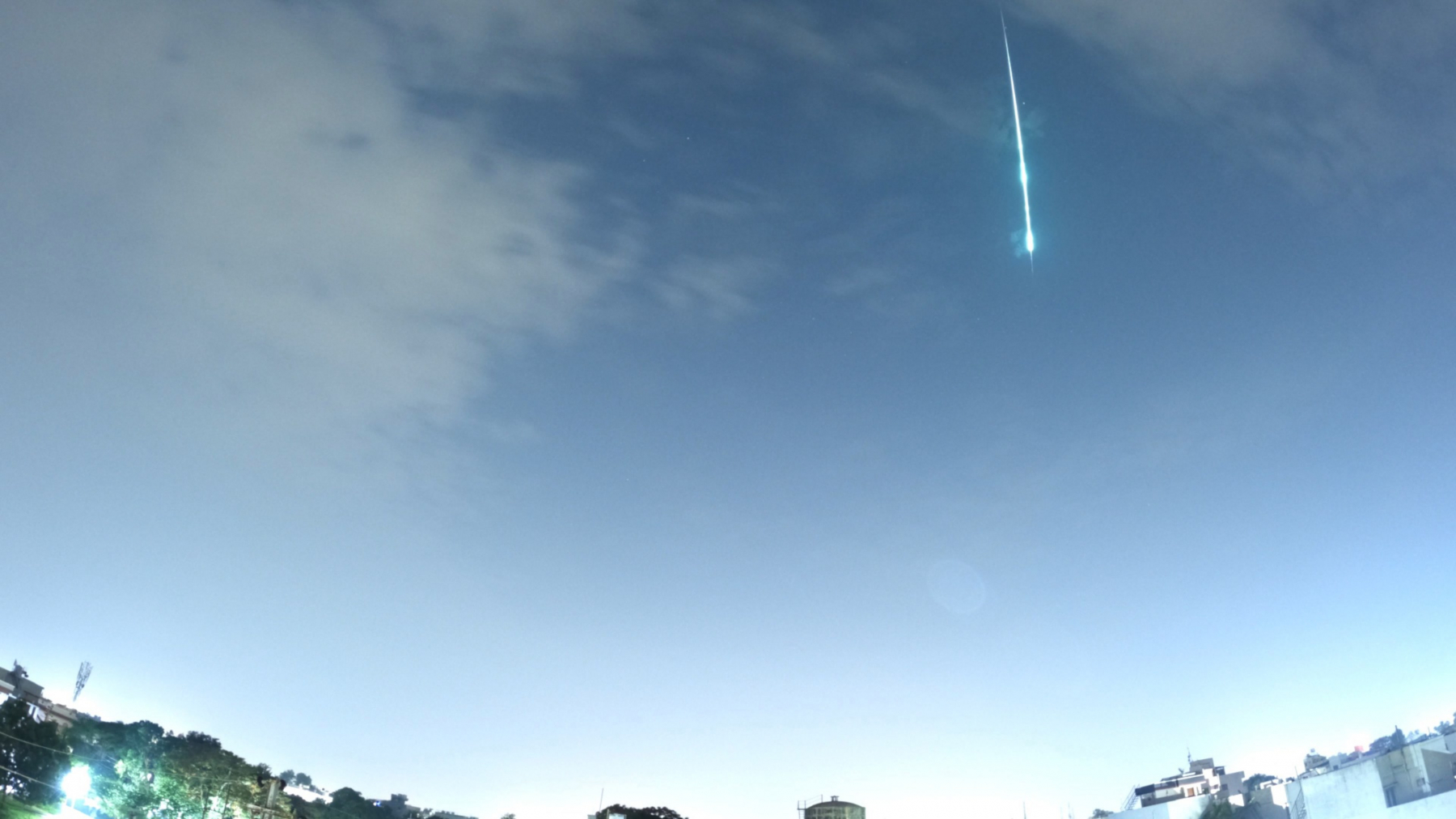 Gaurav Tanwar was capturing night lapse in video mode on his Go Pro hero 9. At 23:59 IST (18:29 UT), this double bursting fireball happened to shoot through the field of view. The date was 9 July 2021 and the location was Indore, Madhya Pradesh, India. The Go Pro settings were: resolution-4k; Lens-Wide; Interval-60s; Shutter-30s; WB-4000K; ISO-400 ©Gaurav Tanwar
Gaurav Tanwar was capturing night lapse in video mode on his Go Pro hero 9. At 23:59 IST (18:29 UT), this double bursting fireball happened to shoot through the field of view. The date was 9 July 2021 and the location was Indore, Madhya Pradesh, India. The Go Pro settings were: resolution-4k; Lens-Wide; Interval-60s; Shutter-30s; WB-4000K; ISO-400 ©Gaurav Tanwar
During this period, the moon reaches its first quarter phase on Saturday July 17th. At this time the moon lies near 90 degrees east of the sun and sets near midnight local summer time (LST). As the week progresses the waxing gibbous moon enters the morning sky and will begin to interfere with morning meteor observing. By the end of the week the nearly full moon will be in the sky nearly all night long making meteor observing difficult at best. The estimated total hourly meteor rates for evening observers this week is near 2 as seen from mid-northern latitudes (45N) and 2 as seen from tropical southern locations (25S). For morning observers, the estimated total hourly rates should be near 15 as seen from mid-northern latitudes (45N) and 17 as seen from tropical southern locations (25S). Evening rates are reduced by moonlight during this period. The actual rates will also depend on factors such as personal light and motion perception, local weather conditions, alertness, and experience in watching meteor activity. Note that the hourly rates listed below are estimates as viewed from dark sky sites away from urban light sources. Observers viewing from urban areas will see less activity as only the brighter meteors will be visible from such locations.
The radiant (the area of the sky where meteors appear to shoot from) positions and rates listed below are exact for Saturday night/Sunday morning July 17/18. These positions do not change greatly day to day so the listed coordinates may be used during this entire period. Most star atlases (available at science stores and planetariums) will provide maps with grid lines of the celestial coordinates so that you may find out exactly where these positions are located in the sky. A planisphere or computer planetarium program is also useful in showing the sky at any time of night on any date of the year. Activity from each radiant is best seen when it is positioned highest in the sky, either due north or south along the meridian, depending on your latitude. It must be remembered that meteor activity is rarely seen at the radiant position. Rather they shoot outwards from the radiant, so it is best to center your field of view so that the radiant lies at the edge and not the center. Viewing there will allow you to easily trace the path of each meteor back to the radiant (if it is a shower member) or in another direction if it is sporadic. Meteor activity is not seen from radiants that are located far below the horizon. The positions below are listed in a west to east manner in order of right ascension (celestial longitude). The positions listed first are located further west therefore are accessible earlier in the night while those listed further down the list rise later in the night.
These sources of meteoric activity are expected to be active this week.
.
The alpha Capricornids (CAP) are active from July 7 through August 15, peaking on July 31st. The radiant is currently located at 20:00 (300) -12. This position lies in eastern Sagittarius, 6 degrees west of the naked eye double star known as (alpha Capricornii). Current rates are expected to be near 1 per hour as seen from the Northern Hemisphere and 2 per hour as seen from south of the equator. These meteors are best seen near 0100 LST, when the radiant lies highest in the sky. With an entry velocity of 23 km/sec., the average meteor from this source would be of slow velocity.
The center of the large Anthelion (ANT) radiant is currently located at 20:32 (308) -19. This position lies in western Capricornus, 5 degrees southeast of the 3rd magnitude star known as Dabih (beta Capricornii Aa). Due to the large size of this radiant, Anthelion activity may also appear from northwestern Aquarius as well as Capricornus. This radiant is best placed near 0100 LST, when it lies on the meridian and is located highest in the sky. Rates at this time should be near 2 per hour as seen from the Northern Hemisphere and 3 per hour as seen from south of the equator. With an entry velocity of 30 km/sec., the average Anthelion meteor would be of slow velocity.
The Southern delta Aquariids (SDA) are now active from a radiant located at 22:04 (331) -18. This area of the sky is located in southwestern Aquarius, 4 degrees south of the 4th magnitude star known as iota Aquarii A. This radiant is best placed near 0300 LST, when it lies on the meridian and is located highest in the sky. Hourly rates at this time should be less than 1 as seen from the Northern Hemisphere and near 1 as seen from south of the equator. With an entry velocity of 41 km/sec., the average meteor from this source would be of medium velocity.
The Piscids Austrinids (PAU) are an obscure shower, not well seen from the northern hemisphere. Recent studies by the IMO Video Network shows little activity. Other studies have indicated that this shower is active later than previously thought. IMO studies show that the activity period is July 15 to August 10, with maximum occurring on July 29th. Using these parameters, the current position of the radiant would be 22:08 (332) -33. This area of the sky is located in southern Piscis Austrinis, 4 degrees west of the 4th magnitude star known as beta Piscis Austrini A. The radiant is best placed near 03:00 LST, when it lies highest in the sky. Current hourly rates should be less than 1 no matter your location. With an entry velocity of 35km/sec., most activity from this radiant would be of medium velocities.
The Perseids (PER) are active from a radiant located at 01:09 (017) +51. This position is not in Perseus, rather it lies in southern Cassiopeia, 6 degrees south of the 2nd magnitude star known as Schedar (alpha Cassiopeiae). This area of the sky is best placed for viewing during the last dark hour before dawn when it lies highest in the sky. Maximum is not until August 12th so current rates are expected to be near 1 as seen from the Northern Hemisphere and less than 1 as seen from south of the equator. With an entry velocity of 59 km/sec., the average meteor from this source would be of swift velocity.
As seen from the mid-northern hemisphere (45N) one would expect to see approximately 10 sporadic meteors per hour during the last hour before dawn as seen from rural observing sites. Evening rates would be near 1 per hour. As seen from the tropical southern latitudes (25S), morning rates would be near 10 per hour as seen from rural observing sites and 1 per hour during the evening hours. Locations between these two extremes would see activity between the listed figures. Evening rates are reduced due to moonlight.
| SHOWER | DATE OF MAXIMUM ACTIVITY | CELESTIAL POSITION | ENTRY VELOCITY | CULMINATION | HOURLY RATE | CLASS |
| RA (RA in Deg.) DEC | Km/Sec | Local Summer Time | North-South | |||
| alpha Capricornids (CAP) | Jul 31 | 19:48 (297) -13 | 23 | 02:00 | 1 – 2 | II |
| Anthelion (ANT) | – | 20:32 (308) -19 | 30 | 02:00 | 2 – 3 | II |
| Southern delta Aquariids (SDA) | Jul 30 | 22:04 (331) -18 | 41 | 04:00 | <1 – 1 | I |
| Piscids Austrinids (PAU) | Jul 29 | 22:08 (332) -33 | 35 | 04:00 | <1 – 1 | I |
| Perseids (PER) | Aug 12 | 00:36 (009) +51 | 59 | 07:00 | 1 – <1 | I |


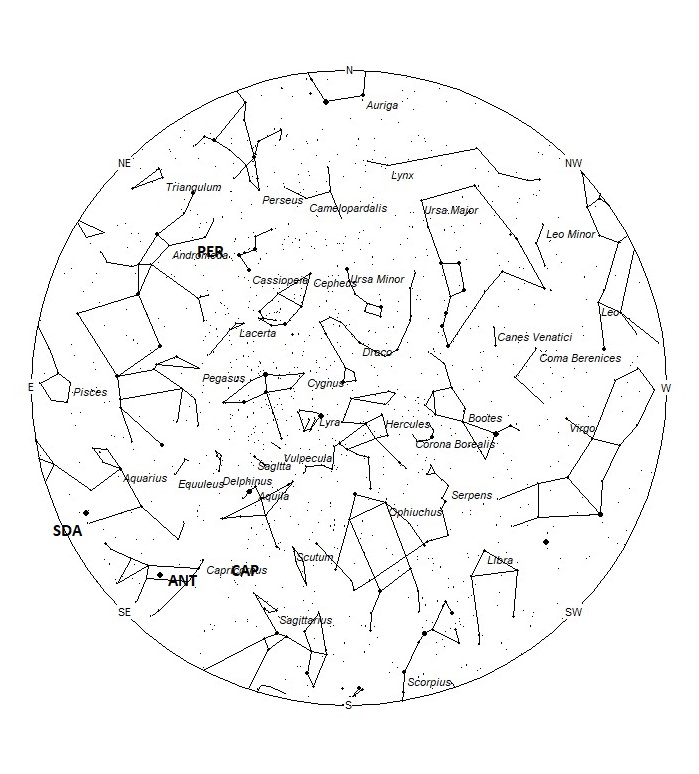
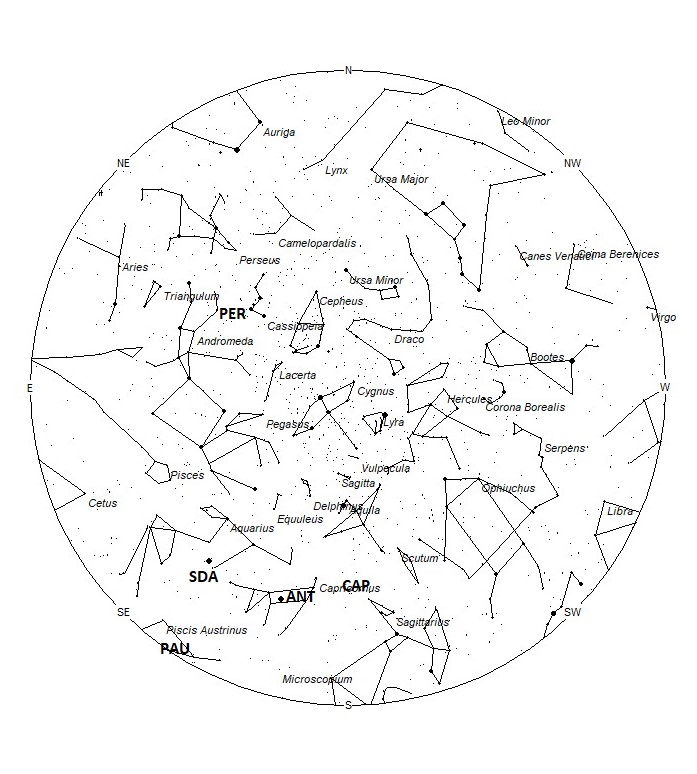
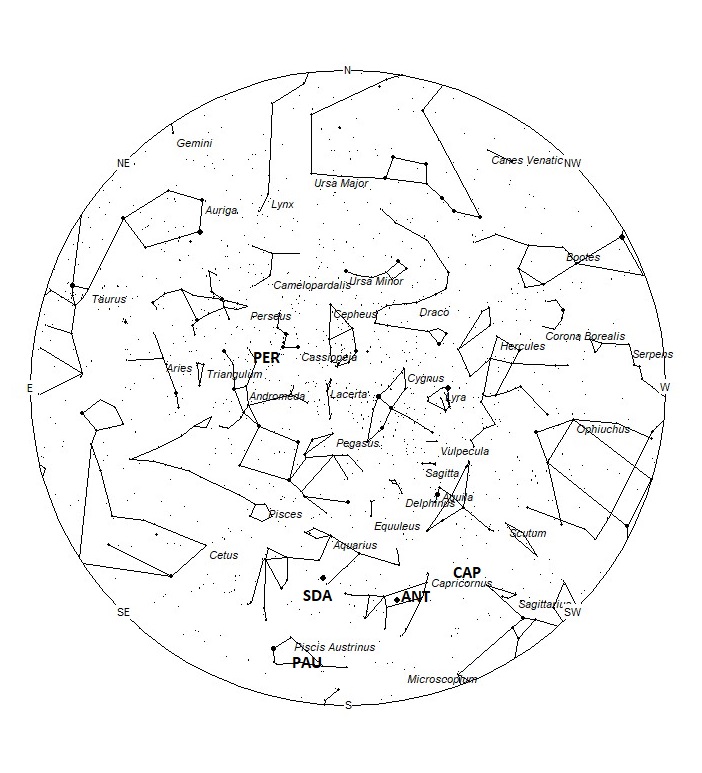

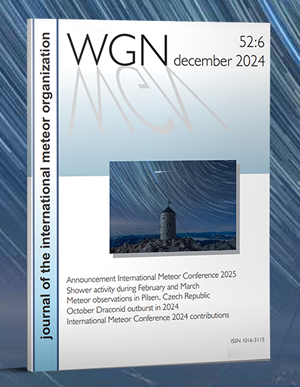
 You saw something bright and fast? Like a huge shooting star? Report it: it may be a fireball.
You saw something bright and fast? Like a huge shooting star? Report it: it may be a fireball.  You counted meteors last night? Share your results with us!
You counted meteors last night? Share your results with us!  You took a photo of a meteor or fireball? You have a screenshot of your cam? Share it with us!
You took a photo of a meteor or fireball? You have a screenshot of your cam? Share it with us!  You caught a meteor or fireball on video? Share your video with us!
You caught a meteor or fireball on video? Share your video with us!